
|
 |
Alexander "Sasha" Volokh
My tour of medieval Europe
Hastings/Battle, England, July 1, 1999
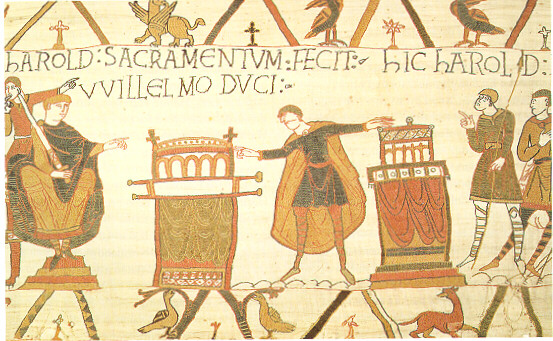
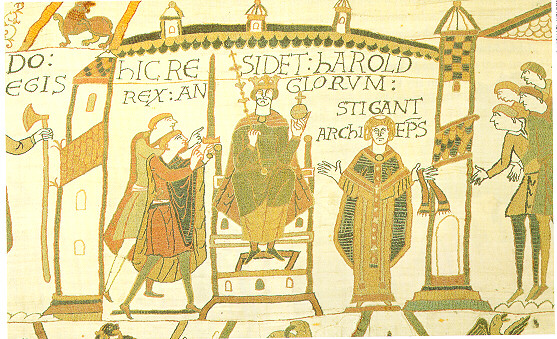
Above: Two scenes from the Bayeux tapestry
The Bayeux Tapestry, now hanging in the Bayeux Cathedral in
Normandy, is a pro-Norman record
of the events leading up to the Norman Conquest.
For a full view and explication of the tapestry, see
Mr.
Sedivy's web site.
On the top, the end of the sentence, "Hic Willelm venit Bagias ubi
Harold sacramentum fecit Willelmo duci" ("Here William came to
Bayeux where Harold took an oath to Duke William") -- this was the
moment when, according to William, Harold had sworn on relics to
help William ascend the English throne.
Also, on the top, the beginning of the next sentence: "Hic Harold
dux reversus est Anglicam terram" ("Here duke Harold has returned to
English soil").
Later, Harold reneged on the alleged deal and became king
himself.
On the bottom, the end of the sentence, "Hic dederunt Haroldo corona
regis" ("Here they gave Harold the crown of the king," apparently
wrong grammar -- should be "coronam"?), and the next sentence, "Hic
residet Harold rex Anglorum" ("Here sits Harold king of the
English").
"Stigant archiep[i]s[copus]" (Archbishop Stigand, who crowned
Harold,) is pointed out.
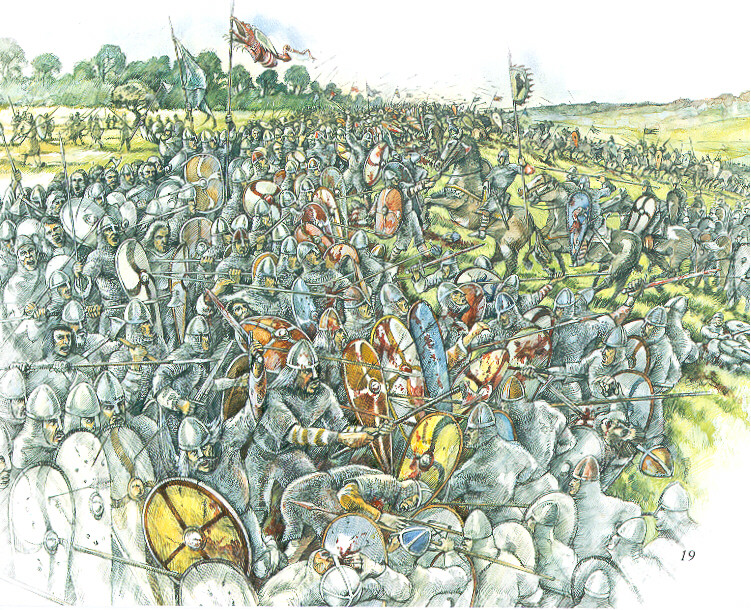
Above: An artist's rendition of the first Norman attack on the
English shield wall (Peter Dunn)
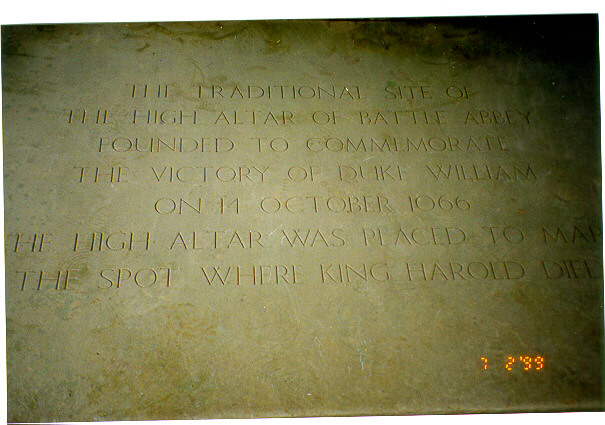
Above: The traditional spot where King Harold was killed, now
marked by this plaque
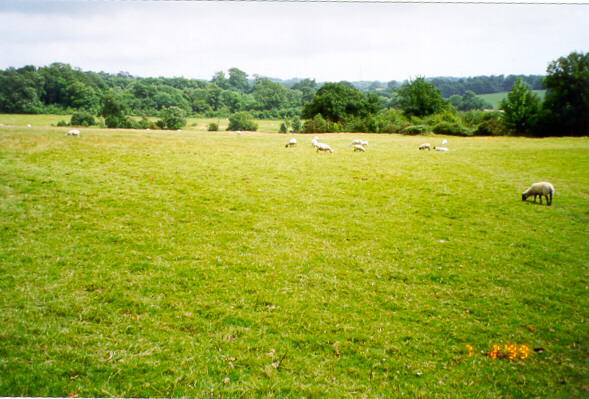
Above: Hastings field today
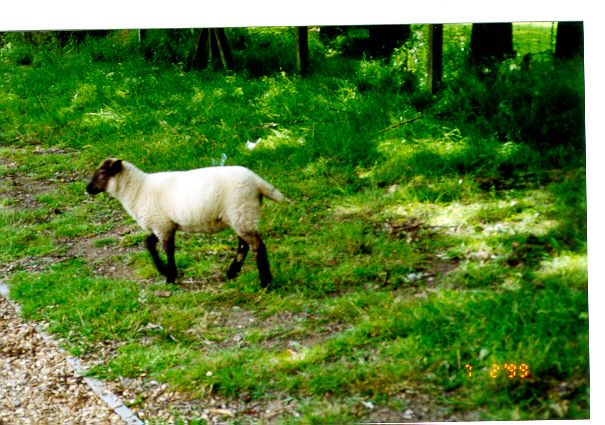
Above: A current inhabitant of Hastings field
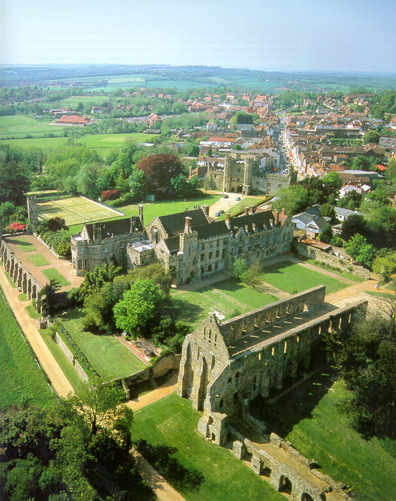
Above: Battle Abbey
"William [the Conqueror] promised to establish a monastery free of
episcopal control if God granted him victory.
This pleasing story first appears in a forged charter of 1154,
produced by the monks as part of their struggle to maintain
exemption from the jurisdiction of the bishop of Chichester in whose
diocese the abbey lay.
More prosaically, William's vow was probably made about 1070.
That year, the papal authorities imposed heavy penalties on the
Normans for the bloodshed of the conquest of England.
An abbey founded here as an act of penance by the king would not
only please his followers and honour the dead of the battle, but it
would also help populate a comparatively empty stretch of country
which had only recently shown itself to be a good invasion route.
In naming it Battle Abbey, the new Norman regime demonstrated its
self-confidence, not to say arrogance"
(The Battle of Hastings and the Story of Battle Abbey,
English Heritage guidebook).
Back to Reculver/Hearne Bay
Advance to Dover
Return to places page
Return to home page
|